5 ways to embed mental health exercises into the primary school routine
Published on: 10 May 2023
Author and teacher Amelia Allen shares how stories can be used to provide children with vital wellbeing support and education from a young age.
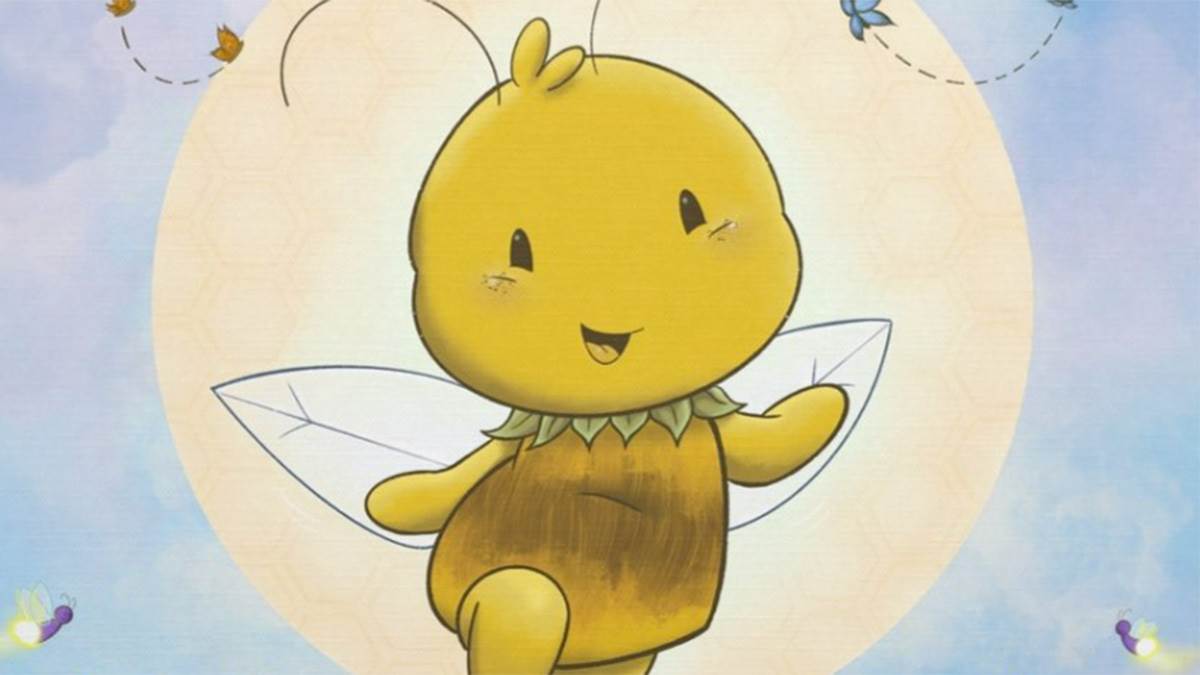
Pic: Aubany Swinney
What is the current state of our children's mental health?
According to recent studies (NHS, 2022), 18% of children aged 7-16 and 22% of young people aged 17-24 years had a probable mental illness. In the last three years, the likelihood of young people having a mental health problem has increased by 50% - now, five children in a classroom of 30 are likely to be affected.
50% of all mental health problems start by the age of 14
39.2% of 6-16 year-olds have experienced a deterioration in their mental health since 2017
Why turn to stories like Busy Bee?
Early intervention is key to giving young people the best start in life. Primary schools have a vital role to play in supporting children's mental health – teaching them the skills they need to recognise and deal with their emotions, and helping those with difficulties to get the support they need.
Throughout my teaching career, I have always been in awe of the resilience and adaptability of children. However, with the ever-changing landscape of education, particularly over the past few years, I am passionate about helping children learn how to face the stresses of our busy world with confidence: they need freedom to express their emotions, as well as strategies to cope when they're struggling. This is where stories come in.
In my classrooms, I have always watched in wonder as stories unlock a world of creativity, open safe spaces for conversation and promote children to reflect on the world they are a part of.
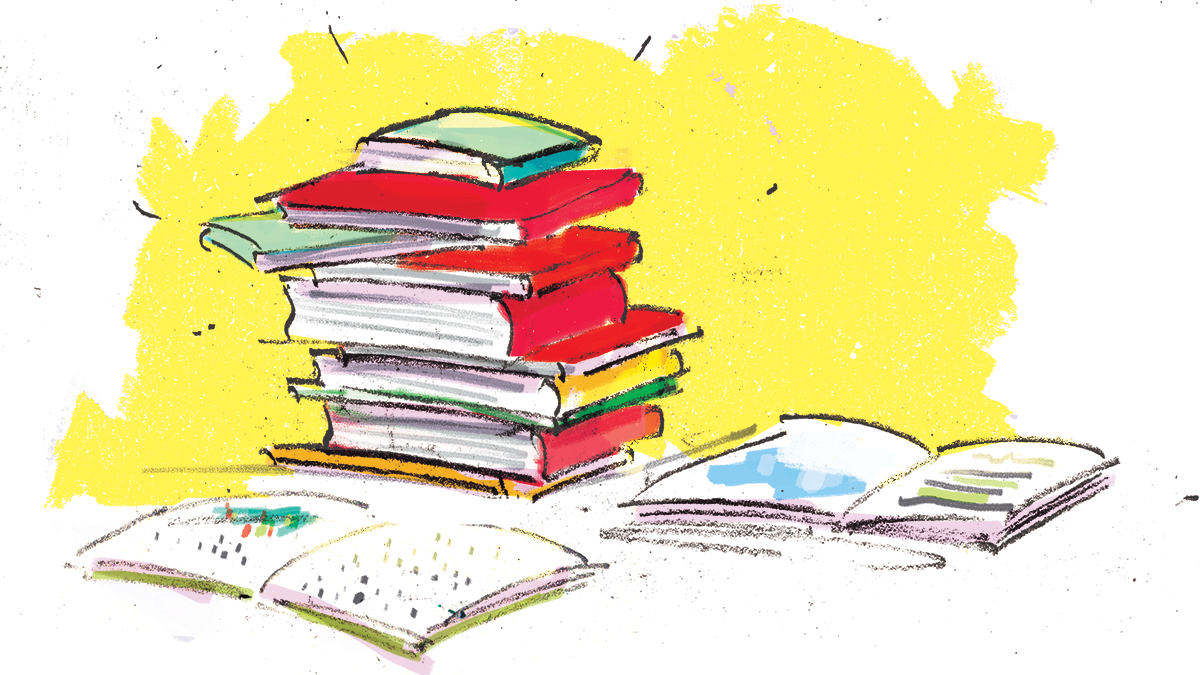
Pic: Kip Alizadeh
Studying for my Masters in Education, I explored the impacts of mindfulness on pupil attainment and wellbeing - and the results were overwhelming. This, combined with my own journey, inspired me to write
Busy Bee, a rhyming children's picture book which aims to raise mental health awareness and to highlight the importance of acknowledging mental wellbeing from a young age.
Everybody has days where they do not feel 100% and life gets on top of them. Busy is no exception: she's a busy little bee who does not realise the physical and emotional toll of her determination to succeed. But by taking time for herself each day and trying different mindful activities (with a little help from her animal friends along the way), Busy can overcome her worries and regain control over her mind.
Now if you're thinking, 'Great – one more thing I need to add to the to-do list!', consider this: Mindfulness can be practised in as little as five minutes per day.
Here are five 5-minute mindful activities that can be introduced to the classroom: you could easily build it into your registration time, or parents could include it in the morning routine as children get ready for the day ahead. And by making the activities fun and alliterative, we hope that children will be more likely to remember them and get involved.
Meditation Monday
Begin the week by setting aside some time to be still, focus and collect your thoughts for the week ahead. Giving the mind time to relax and turning attention to the present moment will enable children (and adults) to clear their minds, concentrate and feel happy with themselves and their environment.
You can use our Meditation Monday scripts (found online at www.justbeecreative.org) or explore the internet for your choice of positive script.
Tune-in Tuesday
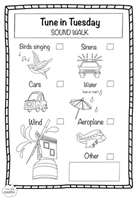 Today, explore the sense of sound. Whether it be a 'relaxation' soundtrack, sitting in silence, or venturing outside for a sound walk, take a moment to notice the sounds around you, even when you think it is quiet.
Today, explore the sense of sound. Whether it be a 'relaxation' soundtrack, sitting in silence, or venturing outside for a sound walk, take a moment to notice the sounds around you, even when you think it is quiet.
Music can be used so effectively in the classroom: to calm students and focus them during independent tasks. However, making sound the focus, rather than the backdrop, will test the children's ability to listen carefully and hopefully train them to be mindful of the sounds that surround them by tuning in and acknowledging in the moment what they hear.
Wiggle Wednesday
Wiggle Wednesdays will test the children's ability to be aware of their body, their strength and their flexibility. They will need to be calm, controlled and collected. These sessions aim to focus the children, whilst also offering their bodies a chance to stretch, relax and warm up for the day ahead. Just Bee Creative has designed a short movement sequence which is safe and simple to try.
Alternatively, crank up the music and get moving. You can choose whichever form of movement your children want to do: five minutes extra on the playground running, pick a song and dance in the classroom, skip, jump, stretch, a quick workout etc. Whatever you choose, five minutes of physical activity will be sure to boost energy levels and increase the happy chemical serotonin. And don't be afraid to mix it up!
Thoughtful Thursday
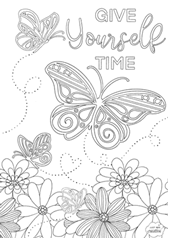
Thursdays are all about taking simple everyday activities and approaching them mindfully - this could include colouring, reading, drawing or watching something (like looking out of the window).
Whichever activity you choose, it is important that it is completed quietly (preferably in silence), so that you can remain fully focused on the task in hand. I encourage you to pay attention to the tiny details that we easily miss during the rush of everyday life. And after the activity, take some time to reflect and discuss what you noticed (like the colour of the leaves of the trees).
Focus Friday
At the end of a long week, it's time to stop, rest and relax. Take a deep breath and reflect on the successes of your week.
Five Finger Breathing is a simple and effective technique. The children raise one hand with their fingers splayed out in front of them. With their other hand they trace their fingers, breathing in as they go up the side of a finger, and breathing out as they trace downwards.
Or why not include breathing into early years education and fine motor skills practice? Whether it is shapes, animals or numbers, children can use their bodies and their minds to focus on their breath.
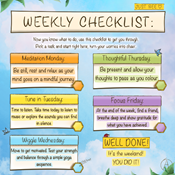 Whatever you choose to do, it is important to involve the children and empower them to take responsibility for their own wellbeing. Print off a checklist and create a wellbeing display in your classroom for the children to tick off as they complete their tasks.
Whatever you choose to do, it is important to involve the children and empower them to take responsibility for their own wellbeing. Print off a checklist and create a wellbeing display in your classroom for the children to tick off as they complete their tasks.
In just five minutes a day, with variety throughout the week, children and adults can benefit from taking a moment and focusing on themselves. Re-focus, re-centre and re-charge.
Head to the website www.justbeecreative.org to find out more about Busy Bee and to download a free Just Bee Creative Educational Resource Pack.
Booklists to try
If you're looking for more books to support wellbeing and mental health awareness, we've picked out some great titles to try.
Supporting a healthy mind
We've put together a selection of picture books that can help young children to start to understand mental health, support a healthy mind, and supply useful strategies.
Books to support mental health awareness for readers under 9
Books that acknowledge or explore mental health issues can help to increase awareness, encourage dialogue, reduce stigma and develop real understanding. The following books are aimed at readers who are in their first few years of school, and they are perfect for sharing.
Topics: Teacher (primary), Mental health, Features







